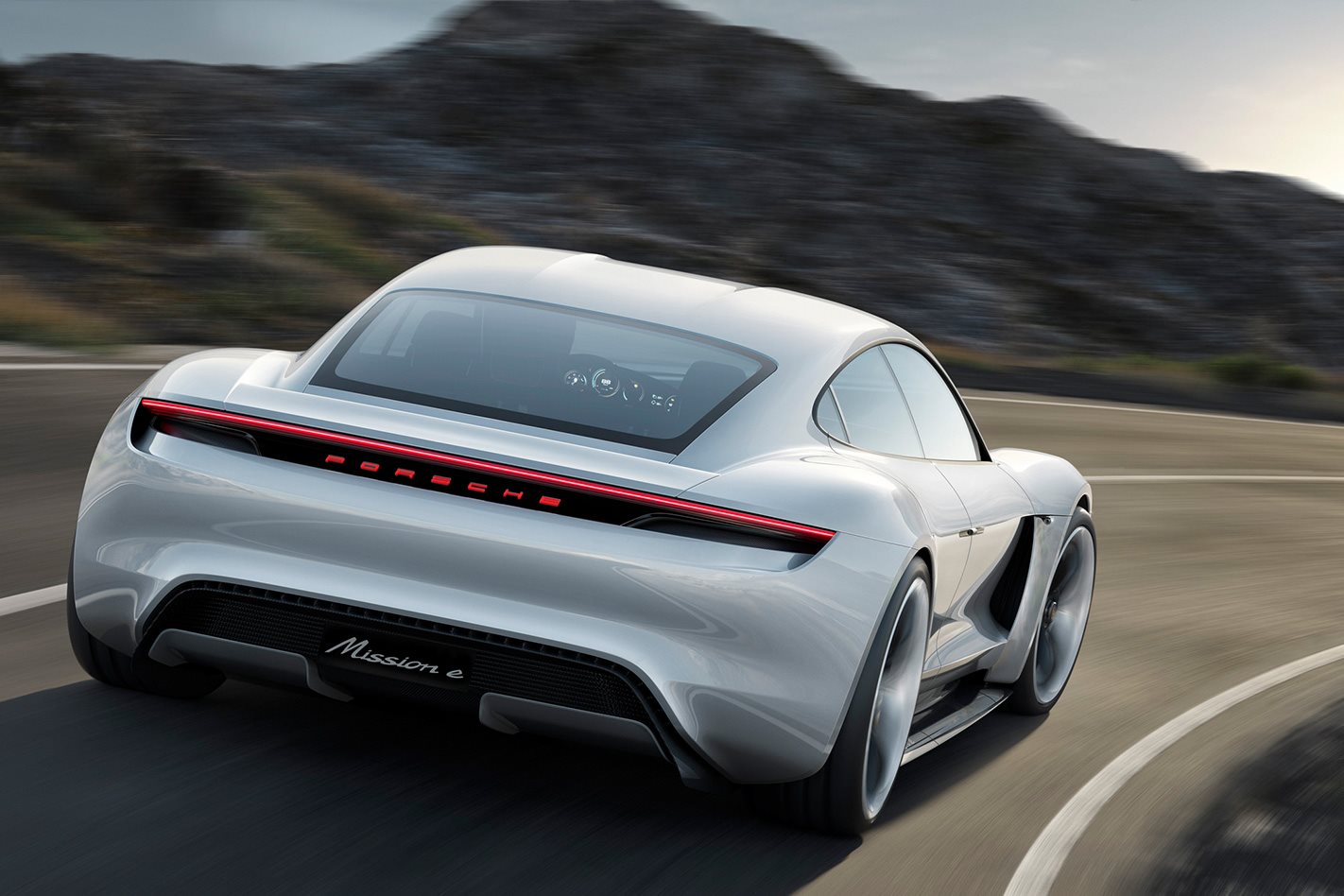PORSCHE will stun visitors to the 2015 Frankfurt Motor Show with the breathtaking styling and advanced technology of its all-electric, four-door Tesla fighter, the Mission E concept.
While rumours had circulated that Porsche would show a sports-sedan concept to rival the BMW 5 Series, the Mission E reality is far more adventurous and is one of the show’s big surprises.
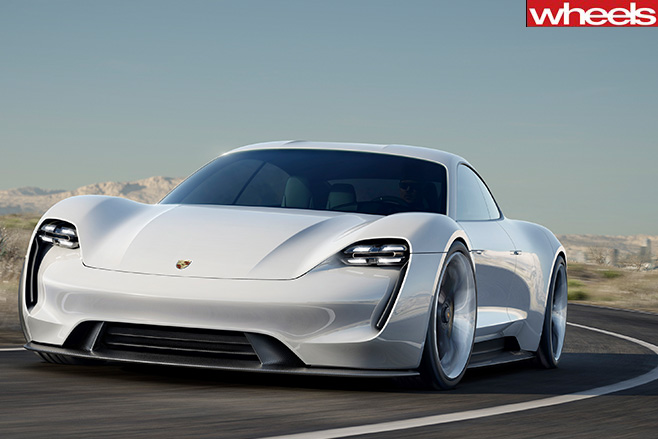
Standing just 1300mm tall, with a latest-technology Lithium Ion battery running the length of its wheelbase for a super-low centre of gravity, the Mission E combines stylistic hints of the 911, the 918 Spyder and Porsche’s Le Mans racers.
But it is what’s under the Mission E’s exquisite aluminium, steel and carbonfibre reinforced polymer skin that really excites.
Featuring a pair of permanently excited synchronous motors, just like the Le Mans-winning 919 hybrid, which split drive evenly to both front and rear axles, the Mission E is a 440kW super sedan capable of reaching 100km/h in under 3.5 seconds and 200km/h in less than 12 seconds.
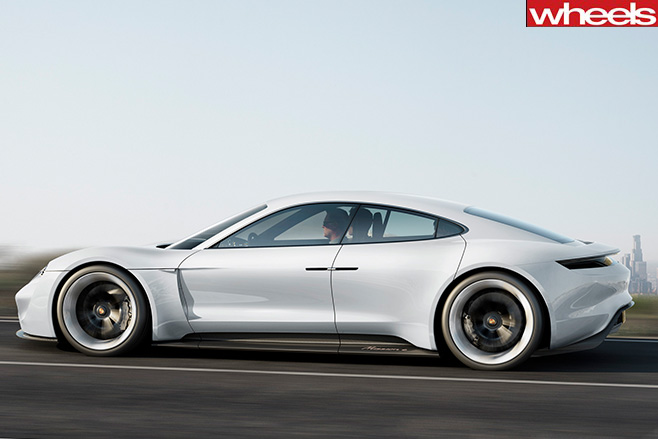
And its chassis employs the full gamut of Porsche dynamic smarts – all-wheel drive with torque vectoring, plus four-wheel steering – to make a sub-eight-minute Nurburgring lap time achievable.
While Porsche claims the Mission E can travel up to 500km on a single charge, it’s the astounding improvement in charging time that really grabs headlines.
Admittedly, it needs to operate at 800 volts – double the voltage current production electric vehicles need – and will require a bespoke charge port, but this reduces charge time to the point where the Mission E can reach 80 percent capacity in just 15 minutes.
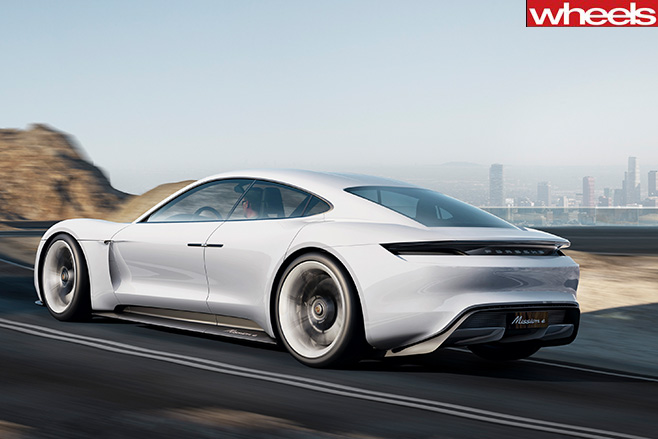
In the flesh, the Mission E is a show-stopper. It’s essentially a montage of Porsche styling cues that miraculously gel organically, and with real beauty. It’s svelte, yet sinister, and that’s a hard combination to pull off.
Based around a flow-through design intended to improve airflow around the wheels and reduce overpressure in the wheel wells, it’s the Mission E’s striking suicide-door design – minus a B-pillar – and its lighting signatures that demand attention. At the rear, a full-width red LED band spans the Mission E’s tail, like Knight Rider for the mid-21st century, with the P-O-R-S-C-H-E letters below it also glowing red. Whatever you do Porsche, please don’t mess up this design for production!
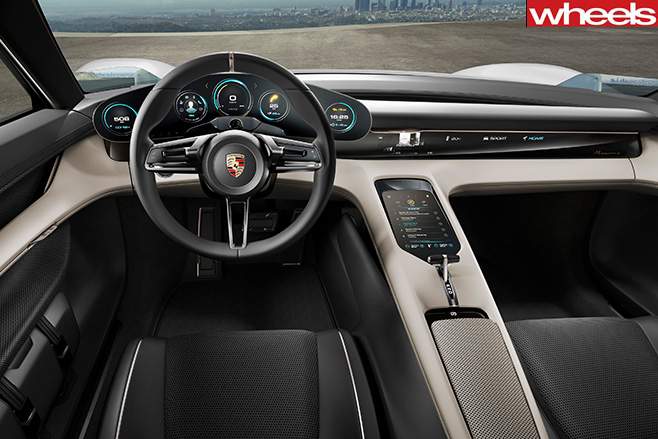
A camera detects which instrument the driver is viewing, and the menus inside that dial can then be controlled by a button on the steering wheel. It’s essentially a mix of eye-tracking and manual operation. The instruments also follow the driver’s movement in what Porsche calls the Parallax Effect, meaning all instruments will always be visible.
More importantly, the Mission E debuts ‘gesture control’, something Volkswagen says will filter down to cars like the Golf. It allows you to select different functions in the car by hand gestures, detected by sensors. A grasping gesture means select, while pulling means control.
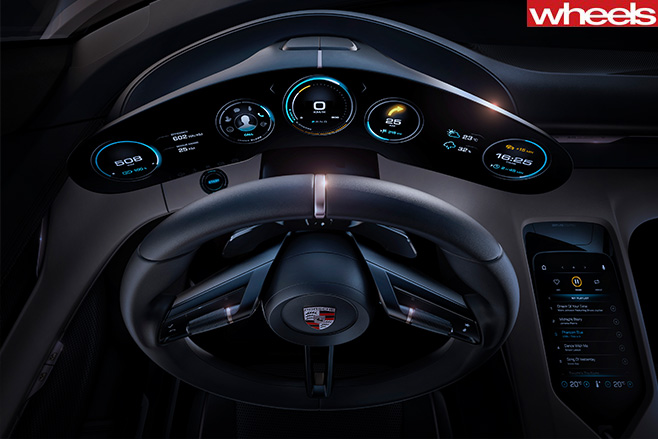
Given that the greater Volkswagen Group intends to launch 20 electric or plug-in hybrid cars before the end of this decade, we may well see the Mission E in reality (with a proper name) sooner than we think.
But please Porsche – don’t do an original Boxster and bugger the concept’s styling. This one is a keeper.

